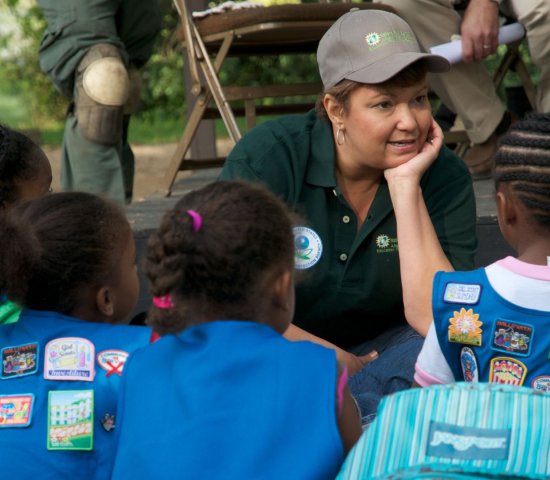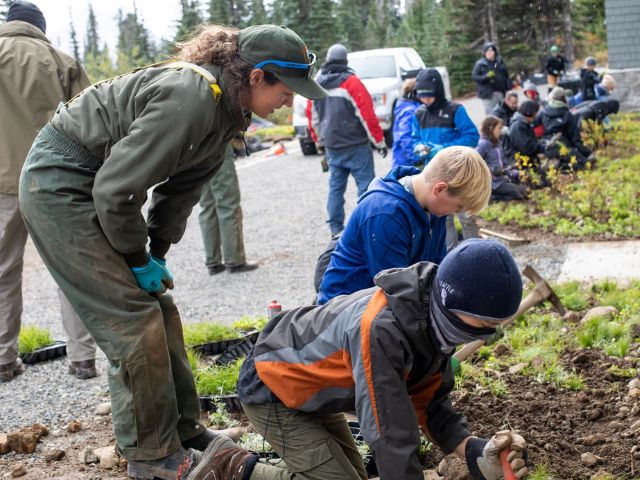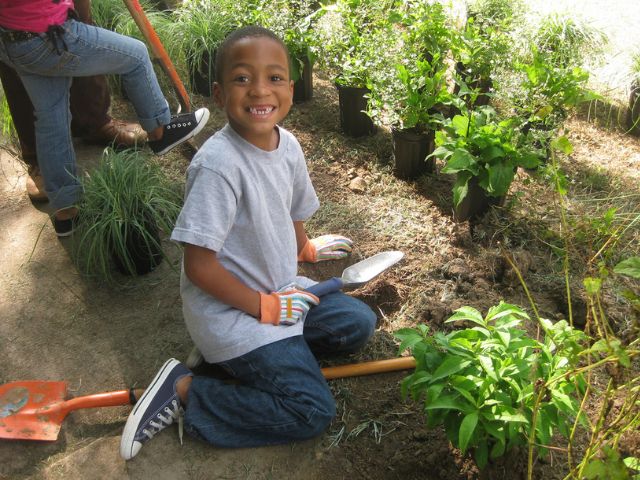
Combining volunteerism with environmental education creates a powerful learning approach that transforms abstract concepts into tangible, meaningful experiences, particularly for young people who learn best through active engagement. When youth participate in conservation projects, habitat restoration, or community cleanup efforts, they develop a deeper understanding of environmental challenges while gaining practical skills and personal investment in finding solutions.
This hands-on approach is especially effective for younger learners, as it connects environmental science to real-world action and helps them see their capacity to make a difference. Youth-focused environmental volunteer programs also build leadership skills, environmental literacy, and civic responsibility during critical developmental years. The collaborative nature of volunteer environmental work builds community connections and social networks that sustain ongoing environmental stewardship, creating informed young advocates who continue promoting sustainable practices throughout their lives and inspire their peers, families, and communities.

Benefits for Your Organization
Expands Your Audience
- Increases inclusive participation of parents and guardians with diverse family structures who may otherwise not attend because of childcare constraints
- Provides opportunities for families to spend quality time while contributing to meaningful causes
- Family involvement brings diverse skillsets as different family members contribute varying abilities and new perspectives to a project
- Families become authentic advocates who share their positive experiences with social networks, broadening your base of supporters
Sustains Your Work
- Creates a positive experience through play opportunities and breaks, which is ideal for young or first-time volunteers
- Youth develop volunteer engagement habits early, creating a pipeline for future volunteers and supporters
- Organizations demonstrate consistent values around community, inclusivity, and shared responsibility
- Multi-generational participation creates deeper long-term relationships, fostering engagement beyond a single event
Planning and Setup
For any event, comprehensive planning is key to participants having an enjoyable and productive event. However, careful planning is essential when engaging youth in events because young participants have unique developmental needs, safety considerations, and learning styles that require thoughtful preparation. Well-structured activities with clear objectives, age-appropriate tasks, and adequate supervision ensure both meaningful engagement and participant safety. Proper planning also includes measures for varying skills and motivation. Without adequate preparation, youth events can become chaotic, unsafe, or fail to achieve their goals, potentially discouraging future participation in environmental activities.
Create Age-Appropriate Tasks
- Match your volunteer tasks with developmental abilities
- Design the volunteerism around shorter shifts, with regular breaks or games in-between the work
- Have visual instructions for non-readers
- For events which include youth and adults, have a dedicated “youth zone” with age-appropriate tasks and child-sized equipment
Structure and Practical Considerations
- Develop a clear schedule to share with parents and leaders
- Have an appropriate adult-to-child ratio (1:5 for small children). Break large groups into small ones that preserve an appropriate adult-to-child ratio
- Provide easy access to restrooms to support a smooth and stress-free experience for children
- Provide healthy snacks and water
Safety Measures
- Train adult volunteers in how to complete the task, safety, and first aid (have first aid kits on site!)
- Collect permission forms with emergency contact information
- Identify and eliminate potential hazards at the site
- Create clear check-in and check-out procedures for parents/guardians who are not volunteering with their children at the event (e.g., dropping children off for a Scout volunteer event)
- Have a designated “safety monitor” to ensure safety procedures are being followed
- Include a buddy system for children
Engagement Strategies
- Explain the “why” behind activities in simple terms
- Create visible progress markers so youth can see their impact (e.g., line up full trash bags so children can see how much they picked up)
- Plan recognition rituals to celebrate contributions (like a certificate or sticker)

Sample Schedule
This sample schedule will help you plan the day, including regular breaks and engagement activities.
| Time | Activity |
| 9:00 a.m. | Volunteer Check-in |
| 9:15 a.m. | Volunteer Welcome - split into small groups |
| 9:30-10:30 a.m. |
Volunteer Project - Group A Games/Hike - Group B |
| 10:30-10:45 a.m. | Snack Break |
| 10:45-11:45 a.m. |
Volunteer Project - Group B Games/Hike - Group A |
| 11:45 a.m.-12 p.m. | Recognition and Closing Remarks |
Volunteerism and Environmental Education Activity Ideas
Environmental education games are not only fun—they can also help explain complex topics and relationships found in ecosystems. The following games have been selected according to their suitability in both formal and non-formal situations and their educational value.
Bat and Moth
Connect this activity to volunteerism with an invasive species removal event, where the volunteer work improves and increases habitat space for insects and provides the platform to talk about bugs and the food chain!
Migration Hopscotch
This activity pairs well with any volunteer project that improves wildlife habitats. Project sites like the beach or nearby paved areas work great, but you can also work with kids to create the hopscotch course using rocks, sticks, or other nearby resources. Restoring natural areas to better conditions provides migratory animals with critical places they need to rest and feed during their journey.
Seed Balls
Seed balls are a fun, hands-on activity that young volunteers can take home as a way to extend their environmental impact. By combining native wildflower seeds with soil and clay, kids can create small, plantable balls that help support local pollinators and green up bare spaces.
Scavenger Hunt
This activity is great for a variety of ages and can be customized for specific grade levels. It can also be adapted to a theme, like searching for signs of biodiversity or site history. Adults also seem to have fun with it when there is a prize involved! Click the button below for a free scavenger hunt template created by NEEF to promote the idea and science behind biodiversity.
Outdoor Discoveries
Outdoor Discoveries is a guide from NEEF focusing on environmental education for National Public Lands Day. This special day offers a unique opportunity to bring educators, youth, and other community members together to make a tangible impact on our public lands. Whether you're a seasoned volunteer manager or an enthusiastic educator, this guide is designed to help you lead inspiring and educational activities that not only enrich our natural spaces but also foster a deeper appreciation for the environment among participants.
Community (Citizen) Science
Looking for a fun, educational activity to pair with your volunteer event? Community science is a great way to help young participants sharpen their observation skills while contributing to real scientific research. From bird watching to plant identification, these hands-on experiences connect students with nature and foster curiosity.
Better yet, National Public Lands Day (NPLD) has its very own annual citizen science project, and you can be a part of it! Whether you're hiking, snowshoeing, or just exploring a local park, there's always an opportunity to learn, observe, and make a difference.
Conclusion
The integration of volunteerism with youth environmental education is a win-win that enhances both public land conservation and youth development. Public land sites benefit from essential stewardship activities such as trail maintenance, invasive species removal, and habitat restoration, while receiving fresh perspectives and energy from young volunteers who often bring innovative approaches to environmental challenges.
For youth participants, these experiences build environmental awareness, leadership skills, and a lifelong connection to natural spaces that transforms them into informed stewards and advocates. Integrating play with volunteerism not only addresses immediate conservation needs but also cultivates the next generation of environmental leaders, ensuring the long-term protection and sustainable use of our public lands while empowering young people with practical skills, scientific knowledge, and a deep sense of civic responsibility.